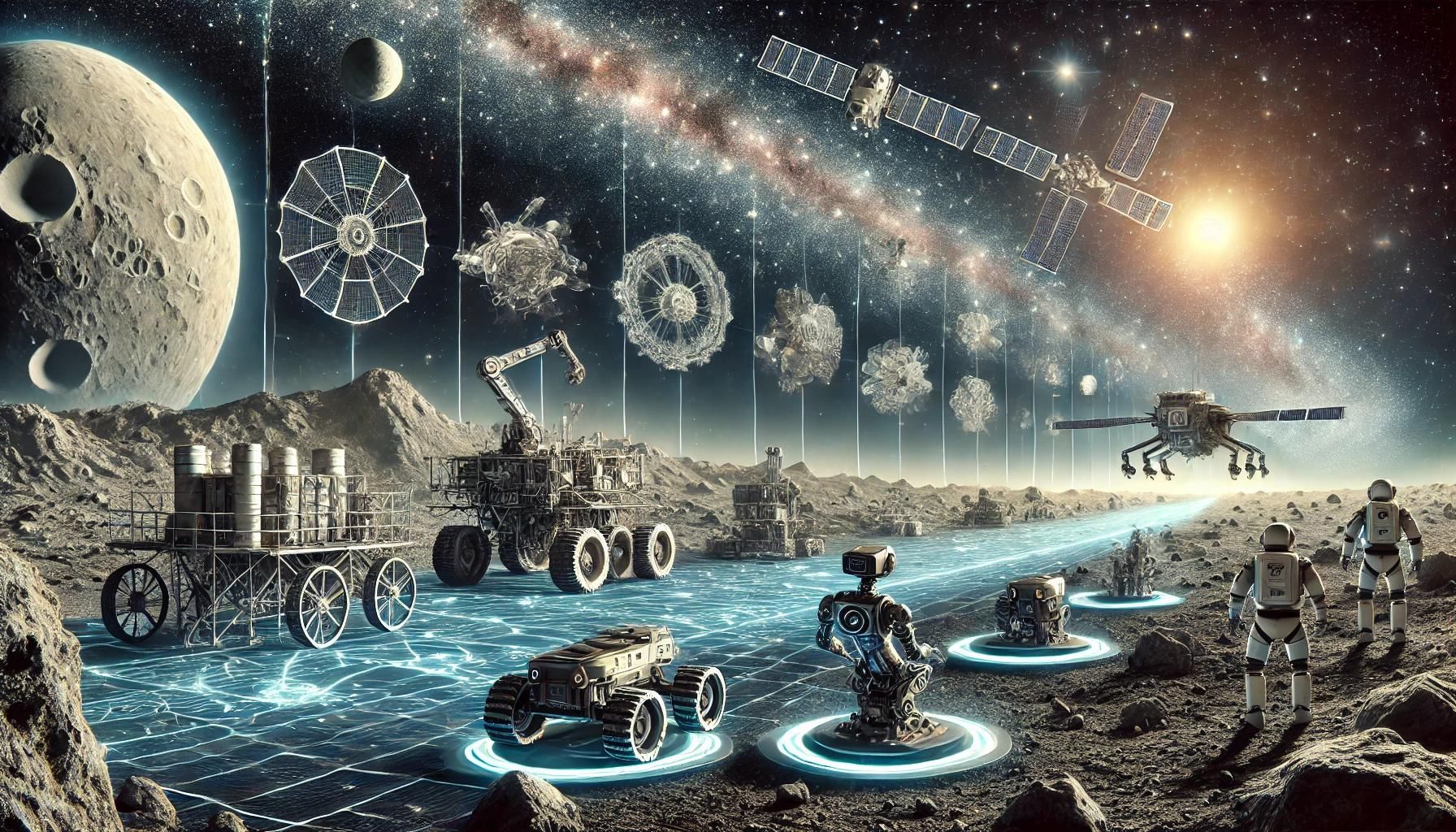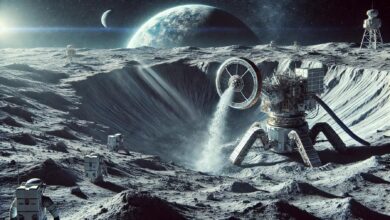Space Mining Technologies: From Concept to Reality

The concept of space mining has long been a staple of science fiction, but recent advancements in technology are rapidly turning this futuristic idea into a reality. Space mining, or the extraction of valuable minerals and resources from celestial bodies such as asteroids, the Moon, and other planets, holds the potential to revolutionize various industries and alleviate resource shortages on Earth. This article explores the development of space mining technologies, from initial concepts to real-world applications, highlighting the key innovations and milestones that have paved the way for this burgeoning field.
The Early Concepts of Space Mining
The idea of mining celestial bodies dates back to the early 20th century when visionaries like Konstantin Tsiolkovsky and Robert Goddard laid the theoretical groundwork for space exploration. However, it was not until the latter half of the century that the concept gained serious attention. The 1960s and 1970s saw increased interest in space exploration, fueled by the Space Race between the United States and the Soviet Union. During this period, the potential for extracting resources from the Moon and asteroids was discussed in scientific circles, although the technology required for such endeavors remained largely speculative.
Technological Advancements in the 21st Century
The dawn of the 21st century brought significant technological advancements that reignited interest in space mining. Several key developments have been instrumental in transforming space mining from a theoretical concept into a feasible industry.
1. Advances in Robotics and Automation
One of the most critical advancements in space mining technology has been the development of sophisticated robotics and automation systems. Autonomous robots capable of operating in the harsh environments of space are essential for conducting mining operations on distant celestial bodies. These robots are equipped with advanced sensors, artificial intelligence (AI), and machine learning algorithms that enable them to navigate, identify valuable resources, and perform extraction tasks with minimal human intervention.
2. Propulsion Technologies
Efficient propulsion systems are crucial for transporting spacecraft to and from mining sites in space. Innovations in propulsion technologies, such as ion thrusters and solar-electric propulsion, have significantly increased the efficiency and range of space missions. These systems use electric fields to accelerate ions, providing continuous and efficient thrust over long durations. This capability is vital for missions that require extended travel times to reach distant asteroids or other celestial bodies.
3. In-Situ Resource Utilization (ISRU)
In-Situ Resource Utilization (ISRU) is a groundbreaking technology that allows space missions to use local resources for life support, fuel, and construction materials. ISRU reduces the need to transport large quantities of supplies from Earth, making space mining missions more feasible and cost-effective. For example, water extracted from lunar or asteroid ice can be split into hydrogen and oxygen, which can be used as rocket fuel or for life support systems.
Key Players in Space Mining
Several private companies and government agencies have emerged as key players in the development and implementation of space mining technologies. These organizations are at the forefront of turning space mining concepts into reality.
1. Planetary Resources
Founded in 2012, Planetary Resources was one of the first companies dedicated to space mining. The company focused on developing technologies for asteroid prospecting and extraction. Despite facing financial challenges and eventually being acquired by blockchain firm ConsenSys, Planetary Resources made significant contributions to advancing space mining technology and inspiring other ventures.
2. Deep Space Industries
Deep Space Industries (DSI) was another pioneering company in the space mining sector. DSI aimed to develop technologies for asteroid mining, including spacecraft for prospecting and extraction missions. The company was acquired by Bradford Space in 2019, but its legacy continues to influence the industry.
3. NASA
NASA has been a major player in advancing space mining technologies through various initiatives and partnerships. The agency’s Artemis program aims to return humans to the Moon and establish a sustainable presence, with ISRU playing a crucial role in utilizing lunar resources. NASA has also collaborated with private companies to develop technologies for asteroid mining and resource extraction.
Milestones in Space Mining Development
Several significant milestones have marked the progress of space mining technologies from concept to reality.
1. NEAR Shoemaker Mission
The Near Earth Asteroid Rendezvous (NEAR) Shoemaker mission, launched by NASA in 1996, was one of the first missions to study an asteroid up close. The spacecraft orbited and landed on the asteroid Eros, providing valuable data on its composition and structure. This mission demonstrated the feasibility of close-up asteroid exploration, a crucial step toward future mining endeavors.
2. Hayabusa Missions
The Japan Aerospace Exploration Agency (JAXA) has made significant contributions to space mining technology with its Hayabusa missions. Hayabusa1, launched in 2003, successfully returned samples from the asteroid Itokawa in 2010. Its successor, Hayabusa2, launched in 2014, returned samples from the asteroid Ryugu in 2020. These missions provided critical insights into the composition of asteroids and the challenges of sample return missions.
3. OSIRIS-REx Mission
NASA’s OSIRIS-REx mission, launched in 2016, aimed to collect samples from the asteroid Bennu and return them to Earth. The spacecraft successfully collected samples in 2020 and is scheduled to return to Earth in 2023. OSIRIS-REx has provided valuable data on Bennu’s composition and the technical challenges of sample collection, informing future mining efforts.
Real-World Applications of Space Mining Technologies
The transition from conceptual space mining technologies to real-world applications has begun, with several promising developments and potential uses.
1. Lunar Resource Utilization
The Moon is a prime target for early space mining efforts due to its proximity to Earth and abundance of valuable resources such as water ice, helium-3, and rare earth elements. ISRU technologies will play a critical role in utilizing these resources for fuel, life support, and construction materials, supporting long-term lunar missions and potential colonization efforts.
2. Asteroid Mining
Asteroids are rich in precious metals such as platinum, gold, and nickel, making them attractive targets for space mining. The development of robotic mining systems and autonomous spacecraft is paving the way for the extraction of these resources. Successful asteroid mining missions could provide a steady supply of valuable materials for use in various industries on Earth.
3. Space-Based Manufacturing
Space mining technologies also have the potential to support space-based manufacturing. Extracted materials can be used to construct satellites, spacecraft, and other infrastructure directly in space. This approach reduces the cost and complexity of launching materials from Earth, enabling more ambitious space exploration and development projects.
Challenges and Future Prospects
Despite significant progress, several challenges remain in the development and implementation of space mining technologies.
1. Technical Challenges
Space mining operations face numerous technical challenges, including the harsh environment of space, the need for advanced robotics and AI, and the development of efficient propulsion systems. Continued investment in research and development is essential to overcome these hurdles.
2. Legal and Regulatory Issues
The legal and regulatory framework for space mining is still evolving. Issues such as property rights, resource ownership, and environmental impact need to be addressed to ensure the sustainable and equitable use of space resources. International cooperation and the development of clear guidelines will be crucial in this regard.
3. Economic Viability
The economic viability of space mining depends on the development of cost-effective technologies and the establishment of a reliable market for space-derived resources. Advances in technology, coupled with increased demand for rare and valuable materials, will drive the economic case for space mining in the coming decades.
Conclusion
The journey from concept to reality for space mining technologies has been marked by significant advancements and milestones. As robotics, propulsion systems, and ISRU technologies continue to evolve, the feasibility of extracting valuable resources from celestial bodies becomes increasingly plausible. While challenges remain, the progress made so far underscores the potential of space mining to revolutionize industries and contribute to humanity’s future in space. As we look to the stars, the dream of space mining is no longer a distant vision but an emerging reality poised to transform our world.
